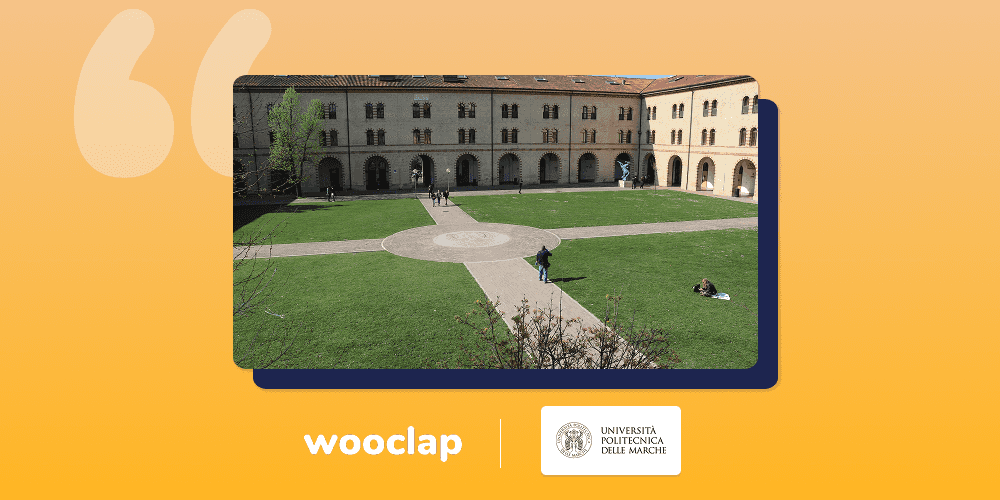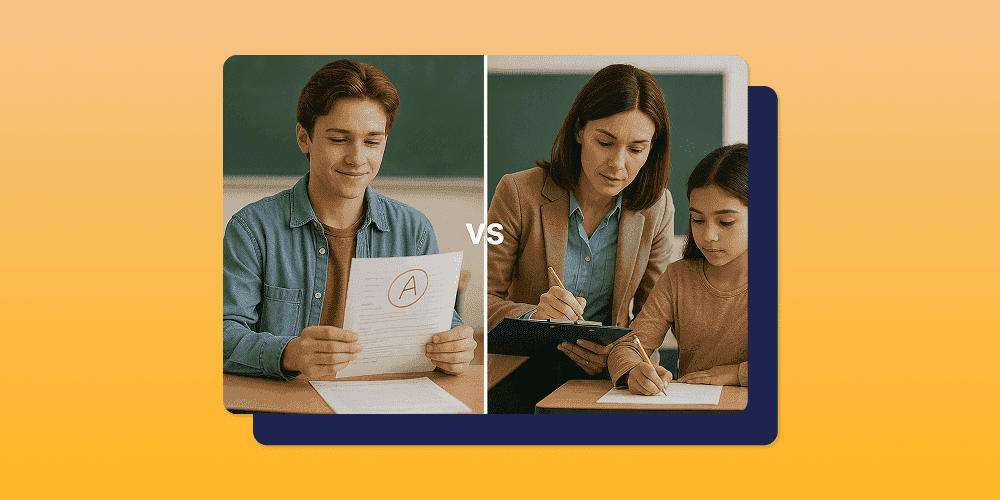
American summer tour! Wooclap will be at InstructureCon 2025
Come say hi at booth 41 from July 22nd to July 24th in Spokane, Washington
Discover what is Gardner’s Multiple Intelligence Theory?
03.01.2025 • 3 minutes

Howard Gardner’s Multiple Intelligence Theory is well known in education: named after its creator, it distinguishes 8 intelligences every person has, in different levels.
But what exactly is the basis of this theory (previous studies or theories, etc.), is it evidence-based, and what does the scientific community think about it? Wooclap deciphers the Multiple Intelligence Theory, its potential advantages in teaching strategies, and its controversial aspects.
Who is Howard Gardner?
Howard Gardner is an American psychologist born in 1943. After earning his doctoral degree in developmental psychology, he studied brain damage. He then realized several patients were incapable of developing intellectual abilities such as speaking or making calculations, but were perfectly capable of learning how to play music or remember a song.
He thus began to develop his Theory of Multiple Intelligences, which he first proposed in 1983: there is no such thing as one single intelligence (measured by Intellectual Quotient or IQ tests, which, by the way, he’s against), but multiple ones.
What is the Multiple Intelligence Theory by Howard Gardner?
Howard Gardner’s Theory of Multiple Intelligences is based on the principle that each individual has different forms of intelligence, 8 to be precise. According to this theory, each human being has all these types of intelligences to different extents; hence there is not one single intelligence –as the IQ theory would have it, by testing only one form of intelligence and devaluing people (especially students, when it comes to education) with poor scores.
In his book Frames of Mind, Howard Gardner explains what an intelligence is, and outlines the following features that allow one to be defined as such:
- intelligence is the ability to solve a problem or a difficulty;
- it is valued by society as useful and important.
Other criteria are also taken into account; such as having defined neural processing pathways (through neurons) and the possibility of encoding it through letters, numbers, musical notes, etc (in other words, linguistic, mathematical, musical elements). Each type of intelligence leads to a specific way of understanding and learning.
What are the 8 intelligence types according to Gardner’s theory?
Intrapersonal intelligence
Intrapersonal intelligence is a form of intelligence close to introspection: it involves being able to find solutions from within, thanks to solitary and profound reflection. It’s the ability to understand one’s own emotions, motivations and feelings.
Students or adults with this form of intelligence should prioritise calm and focus for their work, in order to effectively use their mind.
Interpersonal intelligence
Interpersonal intelligence helps the individual turn to others, understand them and interact with them. The child or adult cooperates with and works well in groups: they understand other people’s intentions and needs in order to move forward.
Are you a teacher who wishes to promote interpersonal intelligence? Group work is key! Interactive tools can help you organize these activities. Wooclap makes group projects easy: thanks to Brainstorming or Word Cloud questions, you can spark ideas and encourage collaborative learning in your classroom!
Logical-mathematical intelligence
Logical-mathematical intelligence is the ability to process and analyse in a logical manner. It allows the child or adult student to understand abstract problems and find solutions to solve them.
Those with rational and mathematical minds need analyses, numbers, organising and categorising to learn.
Visual-spatial intelligence
Visual-spatial intelligence is the ability to recognize and organize images, including the world around us. It allows those who have this form of intelligence to have a spatial representation of the world and its objects.
Students and adults with visual-spatial intelligence (aka visual learners) often have visual memory and learn best through visual stimuli. Visual learners have high chances of better understanding and remembering a concept or data through visual elements, such as graphs, images or videos.
Bodily-kinesthetic intelligence
Bodily-kinesthetic intelligence is the intelligence of the body: someone with this kind of ability has fine motor skills, controls their movements and interactions with their direct environment.
According to Gardner’s theory, the bodily-kinesthetic ability is often found in sportspeople and artists, such as actors and comedians.
Linguistic intelligence
Often valued in school and education, verbal-linguistic intelligence is the ability to understand information through language (oral or written). People with linguistic intelligence show sensitivity to words and communicate easily.
Musical intelligence
Musical intelligence is related to sounds, rhythm and melodies. It not only represents the ability to produce music, but also to recognize and reproduce it.
People with musical intelligence can use rhythm or melodies to learn and remember information.
Naturalistic intelligence
Naturalistic intelligence implies the ability to recognize and classify natural species (animals, plants or minerals). An ability to observe and sensitivity to the natural world are signs of naturalistic intelligence.
Opinions about Gardner’s Theory of Multiple Intelligences
Howard Gardner’s Theory of Multiple Intelligences has been criticized in the scientific world, despite it being widely spread in teaching and education. Why is that so?
Firstly, some scientific researchers criticize the fact that adopting this “theory” (even the word is criticized) in the learning field is done for moral reasons, such as including all the children and students or valuing every skill.
Be these moral reasons as good as they may, Gardner’s way of valuing skills doesn’t make it a true scientific theory.
In his podcast “Scientific Scepticism”, mathematician Nicolas Gauvrit outlines the features that cast Gardner’s ideas aside from a verified thesis:
- it cannot be (or hardly) tested: obtaining evidence is difficult (Gardner himself admitted he did not want to do so, since he himself was against IQ tests);
- since it cannot be tested, it cannot be falsified –it cannot be proved false;
- Howard Gardner changed several times the number of multiple intelligences; so the theory is not a stable one.
Lastly, true scientific experiments have shown certain contradictory aspects: Gardner affirms that these 8 intelligences can be distinguished separately, whereas IQ tests show that some intelligences are non-separable (e.g. emotional and cognitive intelligence).
Thus, Gardner’s multiple intelligences are increasingly being considered to be a neuromyth (i.e. a commonly held misconception about the brain).
FAQ
What is the difference between multiple intelligences and learning styles?
According to Rita Dunn and Kenneth J. Dunn (Teaching Students Through Their Individual Learning Styles, 1978), learning styles are defined as “the way each learner starts to focus on new and difficult information, processes it, and remembers it”.
It is thus a learning process, and not a human being’s innate skill (to be developed) as the multiple intelligences theory would have it.
How can you adapt Gardner’s Multiple Intelligence Theory to personal and professional development?
Knowing oneself is the key to development: using Gardner’s multiple intelligence theory allows us to identify how we think and learn (visual learner, auditory learner, bodily-kinesthetic learner, interpersonal learner, musical learner, linguistic learner), thus strengthening our fortes.
Writer

The Wooclap team
Make learning awesome & effective
Subject
A monthly summary of our product updates and our latest published content, directly in your inbox.



